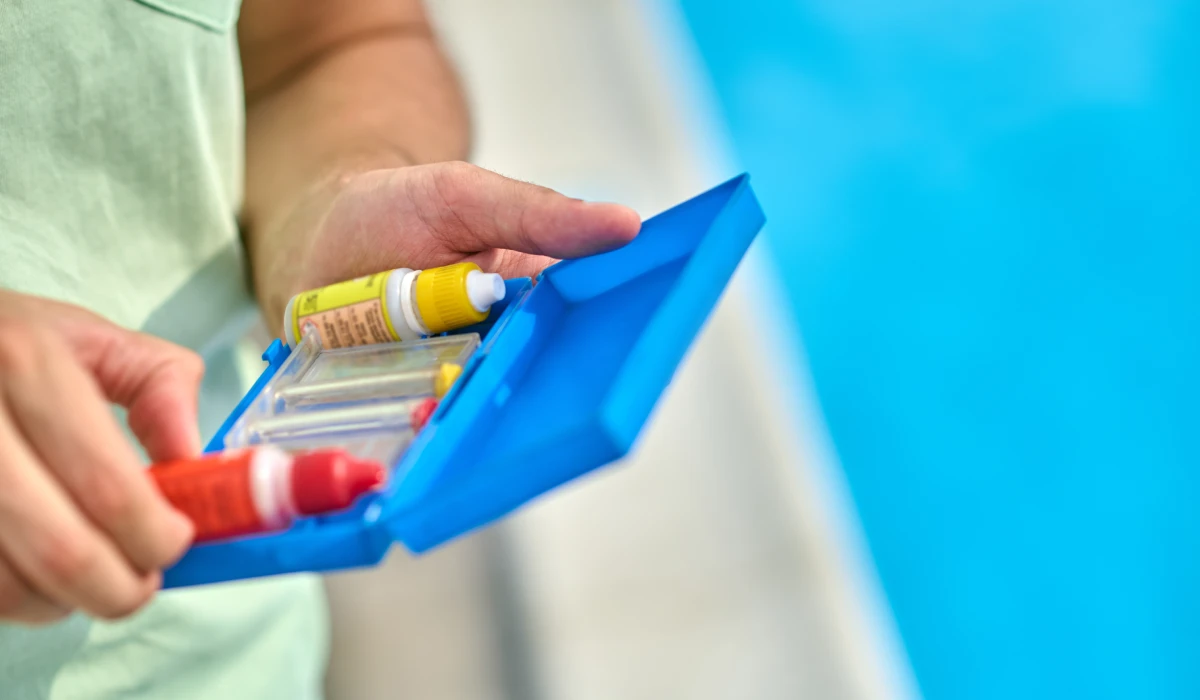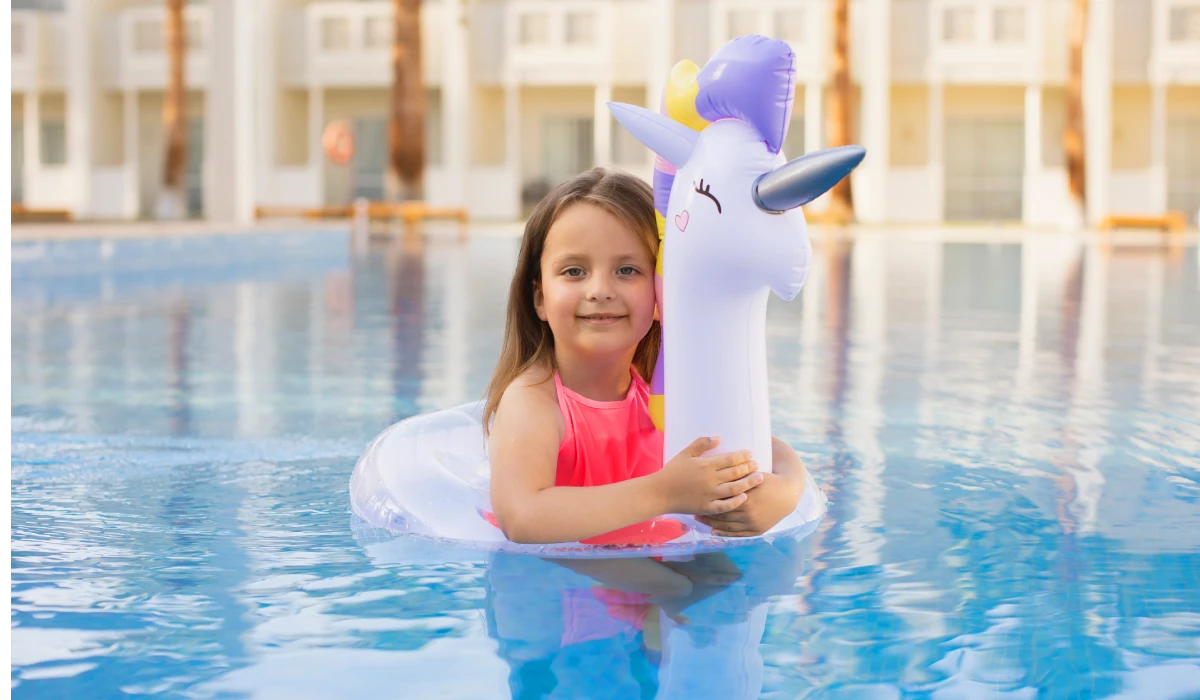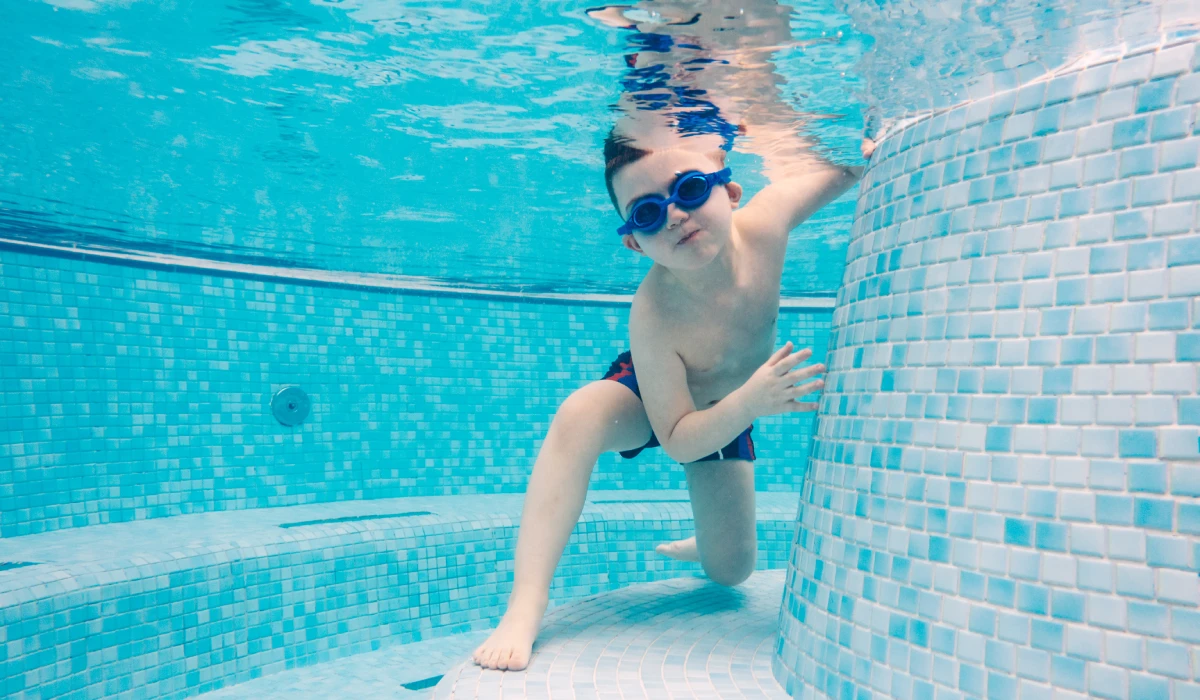A sparkling, safe swimming pool isn’t just about clean water — it’s about balanced water chemistry. Using the right chemicals in the right amounts keeps your pool safe, clear, and algae-free.
In this guide, we’ll walk you through the essential pool chemicals, what they do, and why they matter.
1. Chlorine – The Primary Sanitizer
Purpose: Kills bacteria, viruses, and algae
Why You Need It:
Chlorine is the most common pool sanitizer. It keeps your pool water hygienic and prevents harmful microorganisms from multiplying.
- Ideal Level: 1–3 ppm (parts per million)
- Types: Liquid, granular, or tablets (usually trichlor)
Tip: Use a floating dispenser for tablets to ensure even distribution.
2. pH Increaser & Decreaser – Balance the Acidity
Purpose: Maintains proper water balance and protects pool surfaces
Why You Need It:
pH measures how acidic or basic your pool water is. Improper pH can irritate skin, damage equipment, and reduce chlorine effectiveness.
- Ideal pH Range: 7.2–7.6
- Raise pH with: Soda ash (sodium carbonate)
- Lower pH with: Muriatic acid or sodium bisulfate
A pH below 7.2 makes water corrosive. Above 7.6 can cause scaling.
3. Alkalinity Increaser (Sodium Bicarbonate)
Purpose: Stabilizes pH
Why You Need It:
Total alkalinity acts as a buffer, helping to keep the pH steady. Low alkalinity causes pH to fluctuate, leading to cloudy water and damage.
- Ideal Range: 80–120 ppm
- Raises pH stability and reduces pH bounce
Always adjust alkalinity before pH when balancing your water.
4. Calcium Hardness Increaser
Purpose: Protects plaster, tile, and pool equipment
Why You Need It:
Low calcium can corrode surfaces, while high levels cause scaling. Proper balance keeps your pool structure safe.
- Ideal Range: 200–400 ppm
- Raises calcium with: Calcium chloride
5. Cyanuric Acid (Stabilizer)
Purpose: Protects chlorine from sunlight degradation
Why You Need It:
UV rays break down chlorine quickly. Cyanuric acid acts like sunscreen for chlorine, helping it last longer in outdoor pools.
- Ideal Range: 30–50 ppm
- Too much can reduce chlorine’s effectiveness
- Too little leads to rapid chlorine loss
Outdoor pools especially need this chemical for chlorine efficiency.
6. Shock (Oxidizers)
Purpose: Destroys organic contaminants
Why You Need It:
Shocking your pool clears cloudy water, removes combined chlorine, and kills off hidden bacteria.
- Types: Calcium hypochlorite, dichlor, or non-chlorine shock
- Use weekly or after heavy use, rainstorms, or algae problems
7. Algaecide
Purpose: Prevents and kills algae
Why You Need It:
Algaecide is a backup to chlorine. It prevents algae growth and clears minor blooms before they become green pool disasters.
- Use weekly in warm months
- Choose non-foaming varieties for use with spas or fountains
8. Clarifier & Flocculant
Purpose: Clear up cloudy water
Why You Need It:
Clarifiers clump tiny particles together so the filter can catch them. Flocculants sink debris to the bottom for vacuuming.
Use clarifiers for mild cloudiness. Use flocculant for quick fixes.
Testing and Adjusting
Regular water testing is crucial! Use test strips, liquid test kits, or a digital tester to monitor:
- pH
- Chlorine
- Alkalinity
- Cyanuric acid
- Calcium hardness
Test 2–3 times per week during swimming season. Adjust only one chemical at a time, and always follow product instructions.
Quick Starter Kit Recommendation
If you’re new to pool maintenance, here’s a basic chemical starter kit:
- Chlorine tablets
- pH increaser/decreaser
- Alkalinity increaser
- Cyanuric acid
- Shock
- Test strips or a kit
Conclusion
Pool chemicals might seem intimidating at first, but with a little routine and the right balance, they become easy to manage. Proper water chemistry isn’t just about clear water—it’s about health, safety, and protecting your investment.



